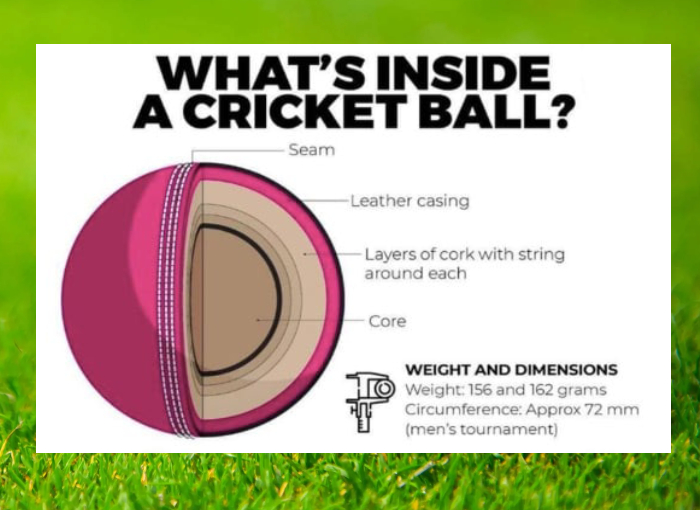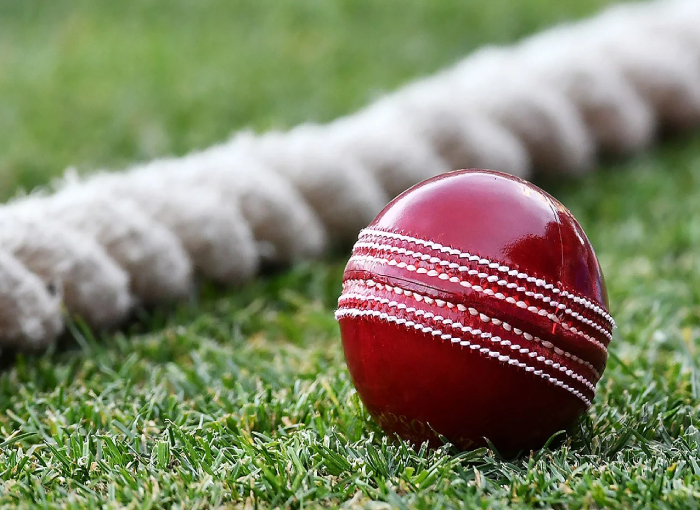As you know that, there are 3 types of balls in cricket history the colour of the ball can affect the way it behaves during the game. Balls used in Test cricket are red and pink. White those used in limited-overs cricket, such as One Day international (ODI) and Twenty20 matches, are white. The cricket ball has a hard exterior that makes the spherical shape around the cork at the core of the ball.
Red Ball
Red balls are normally utilized in Test matches on the grounds that they offer more noteworthy perceivability and can swing more than white balls. The red shade of the ball additionally makes it more straightforward for the players to detect it against the background of the pitch and the defenders. Red balls are made of more diligently than white balls.
- The red ball has a distinct and crisp seam as compared to the white and pink balls.
- The red ball is lighter than the white ball, and hence ballers and use it to their advantage as times.
- The cherry red colour of the cricket ball makes it more useful during any match that happens during day time.
The red ball just has one layer of wax covering on a superficial level making it more helpless against the straightforward mileage of the game, so the red cricket balls regularly break down very soon.
The red balls become hard to find and in some cases even interpretation of an earthy tint when presented to yellow-white floodlights. This makes the ball cover in with the pitch making it difficult for players to utilize it during the evening time or dim circumstances.
White Ball
The white cricket balls were ultimately presented intentionally for one-day matches. The white balls started to be utilized around evening time under floodlights since it was more apparent.
Today, all expert single day games are with white cricket balls. So specialists show specific unmistakable idiosyncrasies on how the white ball acts. These characteristics incorporate how the white balls swings. The white cricket balls swing better in the principal half of an inning contrasted with red balls.
- The white ball is smoother and has a preferred surface over the red and pink balls. Because of the polyurethane covering, the outer layer of the ball becomes better making it inclined to swing at a beginning phase.
- The perceivability of the white ball is uncanny, consequently it is utilized during ODIs and T20s.
- Since the white ball is powerless against mileage too, the more it breaks down, the better the white ball can give a converse swing.
Along such extraordinary characteristics about the white balls come a couple of drawbacks that is overall generally examined around the cricket brotherhood. The difficulties related with the white balls range from it breaking down much speedier and becoming filthy much effectively invalidating the point of perceivability for which it was presented.

Pink Ball
The pink ball is a type of cricket ball that is used in day-night Test matches, where the game is played in the evening and at night under floodlights. The pink ball was developed as an alternative to the traditional red ball, which can be difficult to see under floodlights.
The pink ball is made from the same materials as the red ball, but it has a different color and slightly different properties. The pink color is achieved by adding a pink dye to the leather. The pink ball is designed to last longer and maintain its color better than the red ball.
- The pink ball can persevere through more mileage when contrasted with its white and red partners.
- The pink ball swings more than the white ball and consequently is extremely favorable for bowlers.
- The pink ball is a piece intense on the batsmen, many have grumbled that the batsmen find it hard to detect the ball from the crowd because of its one of a kind tone.
- Wax can’t be applied to the pink ball, common wax creates the pink ball more obscure in variety which can be an issue for players playing in a night schedule opening. An alternate covering is applied to the pink ball to make it all the more splendid, but really diverting.
Conclusion
The main differences between the red, white, and pink balls in cricket are their color, material, and behavior. The red ball is used in Test cricket and swings more than the other balls. The white ball is used in limited-overs cricket and is designed to be more visible and durable. The pink ball is used in day-night Test matches and swings more than the white ball, but is less consistent than the red ball.
Bowlers have since figured out how to utilize various sorts of balls for their different potential benefit. However new guidelines will be set with new guidelines, the entire soul and force of the respectable man’s down can never truly change.

